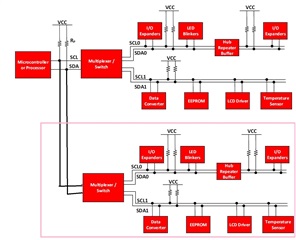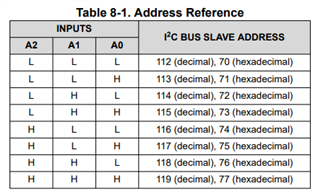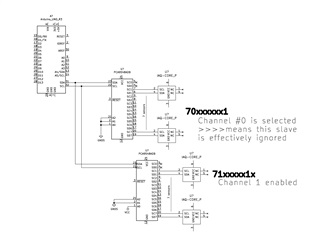Keep in mind that I have not done any experimenting with these chips...only looking over the data-sheets. And, I am not experienced with !2T:
I have a single microprocessor to which I would like to attach more than eight I2T sensors.
The data sheets everywhere show A0, A1, and A2 always connected to ground, giving A0=A1=A2= 0. But the description says that these pins can also be connected to Vcc, giving any pin so connected an address value = 1.
From this, it seems that I can connect multiples of these MUX '9548 to "fan out" to 8, 16, 24 (...etc) sensors which, individually, do not have unique addresses.

The diagram above is copied from the TI bulletin, Understanding the I2C Bus (https://www.ti.com/lit/pdf/SLVA704), which has been modified to show the fan-out to a 2nd MUX.
Am I on the correct track with this arrangement??




